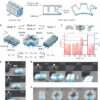Often, science and art are described as starkly different things. That narrative can start early on, with kids encouraged to pursue a STEM – short for science, technology, engineering and math – education that may or may not include an arts education.
As a professor of acting, I’d never thought much about the STEM fields until I received a fellowship to integrate the arts into STEM educational models. I used the opportunity to write and direct a play for elementary schoolers that showed how the arts can improve upon and extend work in STEM fields when properly integrated – but it wasn’t an easy process.
STEM or STEAM?
Whether STEM should be augmented to STEAM – science, technology, engineering, arts and math – with the addition of the arts remains something of a debate.
The origins of STEM education can be traced to as early as the Morrill Act of 1862, which promoted agricultural science and later engineering at land grant universities. In 2001, the National Science Foundation pushed a focus on STEM education in order to make the U.S. more competitive globally.
A Biden-Harris initiative launched in December 2022 called You Belong in STEM offers support of more than US$120 billion for K-12 STEM education until the year 2025. But, starting in 2012, the United States Research Council has explored the idea of a STEAM education.
Researchers have found that when integrated into a STEM education, the arts make space for curiosity and innovation. So why the lack of agreement and consistency around whether it should be STEM or STEAM?
Lots of careers bridge both science and arts, from game design to photography and engineering.
The bias toward emphasizing a STEM education could be driven by the higher future salaries of STEM majors or the significant funding that is connected more to STEM-based research and grants than to the arts. A STEAM education takes more time and is more complex than a traditional STEM educational model.
Or it could simply be that many academics in STEM fields lack the incentive for interdisciplinary work that brings in the arts, and vice versa. In fact, that was exactly the position I was in as an arts-based researcher asked to create something about STEM disciplines that I knew very little about.
Putting on the play
It took me several tries and lots of research to get the script of my STEAM-centered play to its current form.
At first, I made basic discoveries. I learned that there is a debate about whether the arts should be included in a STEM education. I learned that “soft sciences” like psychology are not included in many STEM educational models. I lacked a background in most of the disciplines included in STEM. And I struggled to find a project that inspired me.
But eventually I began work on five one-act plays, called “The STEAM Plays: Using the Arts to Talk about STEM.” Each focused on a category of STEAM…



